Sharlyn J. Lauby's Blog, page 62
October 10, 2021
10 Activities to Improve Your Business Acumen in 2021
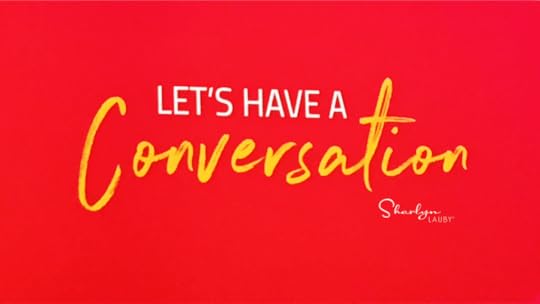
Estimated reading time: 5 minutes
One of the behavioral competencies in the Society for Human Resource Management (SHRM) competency model is business acumen. Organizations continue to be focused on economic recovery. It should be no surprise that we need to know the business, be able to talk about it, and make decisions to help the business grow.
But honestly, it can be challenging to develop business acumen. Oh sure, a lot of people throw business buzzwords around like “hyperlocal” and “growth hacking” but do they really know everything those terms mean? In today’s business world, new concepts are being developed all the time. It’s a challenge to stay current, especially when your plate is already full of work.
To stay up on what’s happening in the business world, I find it helpful to occasionally take inventory of the activities that I’m doing. I’m a fan of lists that remind me to step back and just get focused. So, here’s my list of suggestions for building business acumen.
Read the right stuff. I continue to be a fan of an electronic newsletter called Morning Brew that helps me stay on top of business news. Trust me, I hate junk emails as much as the next person, but this isn’t junk. This weekday enewsletter provides a stock market overview and some commentary about the business headlines of the day. What I really like is the casual, conversational tone. Business acumen doesn’t have to be boring or stuffy to be effective and they’re coming out with an HR focused version soon.Pick a topic you know nothing about … and learn. I’ve set a goal for myself to learn more about cryptocurrency. No, I do not plan to become a crypto trader. But given the number of governments that are starting to recognize cryptocurrencies AND the number of individuals who are starting to ask about being paid in cryptocurrency, I think it would be good to know more. In fact, I’ve recently joined the Workplace Intelligence expertise exchange where you can “pick my brain” and I’m paid in crypto.Learn how your organization makes and spends money. If you haven’t bought your CFO a beverage lately and asked about the profit and loss statement, now might be a good opportunity to do so. Years ago, I did just that during onboarding and it was one of the best hours I’ve ever spent on my career. The good thing is there’s no rule that you’re only allowed to do it once. Consider scheduling time with your CFO right before budget time too and watch your business acumen grow.Step out of your regular responsibilities. The next time your boss is looking for a volunteer, consider raising your hand. Getting involved in project teams can help you 1) learn new knowledge and skills 2) build new working relationships and 3) get noticed by the organization. I know everyone’s calendar is already full. Mine is too. But these types of special assignments might be worth it. Both from a learning perspective and your long-term career development. See if you can squeak out a little bit of time to make it happen.Take a massive open online course (MOOC). Speaking of learning, major universities offer free online courses called MOOCs. Two popular ones are Coursera and edX. I like to take at least one MOOC a year in a topic that has nothing to do with HR. Last year, I took a course about contact tracing – it was super interesting and at the time, I had no idea how relevant to HR it would become. Taking a MOOC not only exposes me to new topics, but the online chats offer insight into different views from all over the world. It’s a great way to gain a global perspective.Learn a new technology. It doesn’t have to be a big software program, but given that our use of technology keeps expanding, it makes sense to learn something new about today’s tech. Since I work remotely, I’ve been focused on learning how to access files from anywhere. I’m also learning more about cybersecurity. Expand your business book library. I’d like to think that everyone has a library – big or small – of books they use on a regular basis. Maybe it’s time to expand it. Ask a handful of people for some business book recommendations. And when you’re thinking about who to ask, consider a diverse group of people who might not always think the way you do.Know your customer. When I talk about customer here, I’m not referring to employees. Do you know who the top ten customers are for your organization? Not just their names, but do you know what they do? Years ago, my employer asked me to go on regular customer calls with the sales team. Super valuable! If you’ve never done it, consider asking a sales manager if you can tag along. You’ll learn a few things and I’d bet that the sales department will be happy you did.Join your professional association. The decision on which professional organization(s) to belong to belongs to you and everyone needs to figure that out on their own. But I do believe it’s valuable to be a member of a professional organization. Let me add that I feel it’s important for individuals to volunteer. Not only will you make lifelong friends, but you will learn from your colleagues. Part of developing business acumen includes developing both an online and an offline professional network.Identify a self-care activity that works for you. Some people might be saying, “What does this have to do with learning business acumen?” I say, “a lot”. In the middle of all the activities I’ve listed, you need to have some fun. You need to take time for yourself. You will learn more and perform better after you figure out the best way to take care of yourself.I’ve come to realize that business acumen isn’t something you learn once and you’re done. Business acumen is changing all the time. Yes, it’s true that terms like profit and EBDITA haven’t changed. We have new terms like blockchain, disruption, and light-bulb moment. If you want to be a contributor and partner to the business, then you must know how to continuously gain exposure to new business concepts and ideas.
Image captured by Sharlyn Lauby while exploring the streets of Nashville, TN
The post 10 Activities to Improve Your Business Acumen in 2021 appeared first on hr bartender.






October 7, 2021
Predictive Analytics: 3 Key HR Measurements

Estimated reading time: 3 minutes
Over the past few years, we’ve seen an increase in conversation about predictive analytics and human resources. So, what exactly are predictive analytics? I like to think of them this way: HR metrics tell you what happened in the past. For example, time to fill or cost per hire. Both of these metrics are valuable, but they might not provide all the information we need to make good business decisions.
Predictive analytics offer insights into the future. It’s focused on probabilities and impact, so it provides flexibility to the organization’s needs. I know, that sounds like a tall order. But I think it’s important to understand the difference between the two, so I picked up a copy of the book “Predictive Analytics for Human Resources” by Jac Fitz-enz and John Mattox. (P.S. Fitz-enz’s book “How to Measure Human Resource Management” is my go-to book for HR metrics.)
HR professionals need to pay attention to predictive analytics because there are times when today’s business environment is moving so quickly that we cannot always be focused on what’s happened in the past. We have to give equal time (and some might argue more time) to what we think is going to happen in the future and plan accordingly.
That’s where predictive analytics comes in because it’s what you do with the information you gather. Predictive analytics measures the three things business people talk about the most: efficiency, effectiveness, and outcomes.
Efficiency measurements include some things we already calculate such as average number of days to fill a requisition and cost per hire.Effectiveness measurements might contain information such as new hire performance ratings, engagement survey results, and exit interview data.Outcomes measure results like profitability, productivity, and retention.Predictive analytics is focused on the connection between these three types of measurement. Here are a few examples:
Number of open positions (efficiency) – Quality of hire (effectiveness) – Length of employment (outcome)Average cost per hire (efficiency) – Cultural fit (effectiveness) – Contribution to product quality (outcome)Amount of training attended (efficiency) – Hi/lo performance potential (effectiveness) – Increased profit margin (outcome)Don’t worry – HR metrics aren’t going away. But neither are predictive analytics. Human resources professionals need to continue to develop their analytical abilities. Let me add this isn’t just an HR “thing”. Predictive analytics are becoming a part of every aspect of the organization. Everyone will want to understand how predictive analytics are a part of their work.
In fact, when it comes to HR, an increasing number of departments are designing analytical roles. If you’re looking for a job in human resources, knowing something about predictive analytics will be important. This is a trend you should want to be on the front-end of because it’s not going away anytime soon. If ever.
Image captured by Sharlyn Lauby after speaking at the SAP Ariba Live Supplier Digital Summit in Barcelona, Spain
The post Predictive Analytics: 3 Key HR Measurements appeared first on hr bartender.






October 5, 2021
Employees Today Want Jobs That Offer a Future and Good Pay
Estimated reading time: 3 minutes
Is it really that simple? Employees want to work for companies that offer them a future and a competitive employee value proposition.
A few weeks ago, I asked for your feedback on a poll about “Why Would You Leave Your Organization?” And here’s what you said at the time we wrote this article:
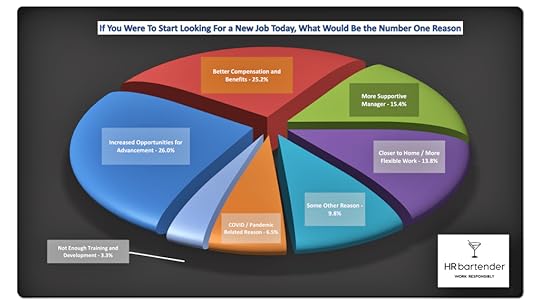
We ran a similar survey to this one on HR Bartender a couple of years ago. One of the areas I was curious about was the pandemic. We’ve heard a lot over the past few months about how COVID has impacted the workplace (i.e., The Great Resignation). I wanted to see how the pandemic would rate in the responses. Interestingly, it rated low on the list of reasons that individuals would consider leaving their current employer.
The top two responses were increased opportunities for advancement and better compensation and benefits. It was interesting to see how close the percentages were. Since this was the first time we’ve done the same survey twice, I compared this year’s rankings to our previous poll and guess what? Back in 2018, the first two spots were the same: better compensation and benefits and increased opportunities for advancement – just in reverse order.
I think this is very telling. Is the key to attracting, engaging, and retaining talent really that simple? It could make some sense for organizations to ask themselves a couple of questions:
Do we offer a pay and benefits package that’s internally fair and externally competitive?Does the company make it a priority to provide employees with advancement opportunities?Maybe this is the place to start when it comes to the employee experience. If organizations don’t focus on these two things, then I’m not sure that fancy amenities are going to convince employees to stay. The poll results said to me that organizations need to get the basics right. They need to build a solid foundation for employees then add those unique elements that make your organization unique and contribute to your culture.
If you’re wondering how to figure out the answers to the two questions above, here are a few places to look:
Benchmarking surveys. Organizations can compare their pay and benefits to others in their competitive set. It might be possible to get survey data based on your industry or your location.Employee surveys. Review prior survey results for employee feedback on pay and promotional opportunities. Organizations should also check stay interview and exit interview data.Internal mobility metrics. Look at the internal job posting and job bidding processes. Does the company track how many people apply for internal opportunities? How many openings are filled with internal candidates (versus external hires)?The good news is that many organizations have this data at their fingertips. It might not answer all the company’s questions, but it could be a great place to start your analysis. Especially right now as organizations are creating their return to the office plans. We can – and need to – focus on the right things now, so employees know the company is prepared to invest in their success.
The post Employees Today Want Jobs That Offer a Future and Good Pay appeared first on hr bartender.






October 3, 2021
Virtual Activities Have a Permanent Place in Onboarding
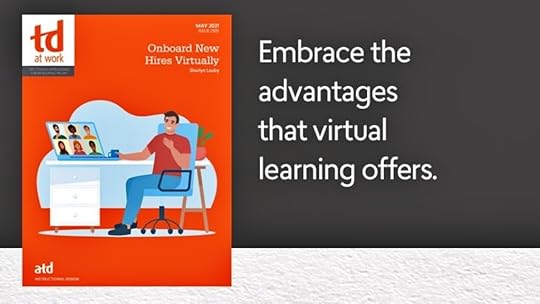
Estimated reading time: 4 minutes
My local newspaper recently published an article “Will virtual onboarding for new workers be the norm post-pandemic? Some experts think so.” My big takeaway from the article was that, just because we’ve started doing some virtual activities due to the pandemic, that doesn’t mean we have to stop doing those activities as we become more mobile and begin returning to the office.
I really believe this is a lesson that organizations and individuals need to consider. Over the past year or so, we’ve learned some new things. We’ve learned new ways to be effective and efficient. Those new ways of doing things should not be discarded. In fact, they should be embraced.
As an example of how not to do it, here’s an article from The Washington Post titled “Workers are putting on pants to return to the office only to be on Zoom all day.” I feel pretty comfortable saying that employees will view this as a huge waste of time and drain on productivity. There’s got to be a better way.
Which takes us back to the initial article about virtual onboarding. To be honest, I don’t know that 100% virtual onboarding makes sense. This isn’t a slam against organizations that have been doing total virtual onboarding. We’re still in a pandemic. You must do what works best. But hopefully, as organizations are making their return to the office plans, they are including some sort of mini onboarding to give employees who were hired during the pandemic an opportunity for a few in person activities.
For example, employees might start using some onsite equipment and need instruction about how to use it safely. It just makes sense to do this in person. Even on camera isn’t the best option for something like this.
However, this doesn’t mean that some of the activities that were done virtually – and done well virtually – must be discontinued. For instance, benefits enrollments via video have become very popular. Employees can participate at their convenience and listen to recordings to hear information again. They can also have family members participate, since a lot of benefits decisions are family decisions.
Onboarding can take on a whole new meaning by including a self-learning component. We want employees to be self-learners. Setting expectations early and giving employees time for self-learning could make a huge difference in employee learning and comprehension.
In addition, organizations with a multi-location workforce can use virtual onboarding activities to introduce employees to their colleagues in other places. They can work on activities virtually that will improve global collaboration and team development.
The challenge becomes taking the time to evaluate everything. If organizations spend all their time and resources simply “getting things back to pre-pandemic status”, they might miss out on creating the best.
The good news is that many organizations are using this time of year to set goals and establish budgets. Organizations might want to add a few questions to their processes: Does what we’re doing right now work well? If the answer is “yes”, is there anything we can do to make it better? If the answer is “no”, what do we need to do? Please notice I didn’t make any mention of how things used to be. Because it’s possible that the organization doesn’t need to return to the past. What they really need is to start over.
[image error]P.S. If you’re looking for a way to incorporate more virtual activities in your onboarding program, I recently partnered with the Association for Talent Development (ATD) on a TD@Work titled “Onboard New Hires Virtually”. It’s a quick read (15 pages) focused on practical solutions for virtual onboarding. It also includes a planning template to guide your process. I hope you’ll check it out.
The post Virtual Activities Have a Permanent Place in Onboarding appeared first on hr bartender.






September 30, 2021
Recruitment Skills Training: Educate Hiring Managers on These 5 Topics

Estimated reading time: 4 minutes
Recruitment is a hot topic right now and my prediction is that it will be for quite some time. A key player in the recruitment process is the hiring manager. Ultimately, the candidate reports to them. The hiring manager is responsible for onboarding, engaging, and retaining the employee.
But like the rest of us, managers have a tough job and a very full plate. In addition to staffing, the traditional definition of management says that managers are responsible for activities like department planning, organizing work, leading teams, and controlling resources. Because managers are often hired and promoted for their technical expertise, and not their ability to hire others, organizations need to give hiring managers all the tools they need to hire effectively.
Hiring managers need more than just interview skills training. Don’t get me wrong. I believe interviewing is hard and complicated and managers definitely need training in this area. But they also need to know more about the overall recruitment process. Managers need recruitment skills training.
So, here’s a list of five things that hiring managers should know when they are responsible for hiring. These recruitment skills topics could be shared during one-on-one sessions or added to the company’s existing interviewing skills training program.
Their role in the recruiting process. Often managers are asked to interview without understanding the entire recruiting process – branding, sourcing, candidate experience, screening, selection, etc. There’s so much more to the process than the interview. Hiring managers would be better interviewers – and make better candidate selections – if they knew what happens before and after.Reviewing the job description. On some level, organizations have two job descriptions: the one that’s written down for legal purposes and the one we talk about to get a candidate excited about coming to work for the company. Hiring managers need to make sure the job they communicate to candidates aligns with the copy of the job description that HR provides to candidates. HR and legal departments might want to collaborate on this one.Understanding employment law. Speaking of legal departments, hiring managers need to know what’s legal to discuss and how to take good notes. Even if the company has an excellent recruiting technology solution, it’s possible there will be times when taking handwritten notes might be necessary. Legal information might vary by state or country. It could also vary by industry. Oh, and one more thing…hiring managers should know how to extend a proper job offer. They might not do it every day, but they should know how (just in case).The cost and impact of hiring decisions. Hiring an employee isn’t cheap. And a bad hire has an impact on everyone in the company. Managers should understand what it costs. I once worked for a company that, before we even started talking about interviews, etc., we had managers calculate cost per hire (CPH). Then we had a discussion about what CPH could buy (i.e., equipment, pay increases, bonuses, etc.) It set the stage for the rest of our training time.How to evaluate a candidate. Personally, I find that the selection part of the recruiting process frequently gets rushed. We spend so much time sourcing, screening, and interviewing, only to spend a few moments on selection. If that’s all the time needed, then great. But I do wonder if it should be longer. Hiring managers should receive self-awareness and bias training. They need to know how to objectively evaluate the skills and qualifications of a candidate.We can’t emphasize enough that one of the biggest responsibilities that managers have is recruitment. Because if they don’t do it well, then the other functions of their job (planning, organizing, leading, and controlling) will not go well. Organizations need to give managers the skills they need not only to interview but understand the recruiting process. That translates into better hires who can help the company achieve its goals.
Image is a stock photo of Vince Vaughn from the movie Unfinished Business
The post Recruitment Skills Training: Educate Hiring Managers on These 5 Topics appeared first on hr bartender.






September 28, 2021
The Employee Lifecycle Has Not Changed But the Employee Experience Needs To
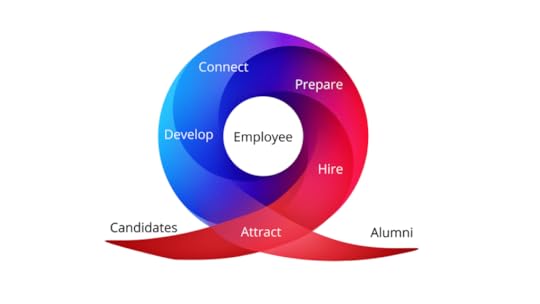
Estimated reading time: 5 minutes
(Editor’s Note: Today’s article is brought to you by our friends at SilkRoad Technology , a provider of strategic onboarding solutions to drive workforce readiness and organizational transformation. They were recently recognized as one of Chicago’s Best Places to Work . Many congrats to them. Enjoy the article!)
According to SilkRoad Technology’s Full-time Flexibility Report, 2 in 5 office workers (40%) are planning to look for a new job because of the way their employer handled the pandemic. This data shouldn’t be a surprise. It aligns with the comments when we’ve been reading about “The Great Resignation” and the “turnover tsunami”. The reason I want to remind us about the retention challenges we’re facing right now is because it’s possible we will be experiencing this for quite some time.
I totally understand that organizations might be understaffed right now and they’re trying to get their operations back to some level of normalcy, but it doesn’t change the fact that we’re not going back to pre-pandemic “normal” anytime soon. If ever. Now might be time to realize that the next normal isn’t necessarily a bad thing.
The business world is constantly changing and as a result, the employee experience should constantly evolve with it. I’m not talking about the different phases of the employee lifecycle: hiring, onboarding, engagement, development, retention, and separation. Those really don’t change much.
What should be changing is the organization’s approach to these lifecycle phases, which is the essence of the employee experience. Organizations should ask themselves, “What is our candidate experience?”, “How will the organization conduct onboarding?” Those experiences can and should change over time because employee wants and needs change.
Which takes us back to the statistic at the beginning of this article about employees looking for new opportunities. I believe what we’re seeing right now is this – what employees want in their work experience is changing. Organizations need to think about how they’re going to address what employees want in their employee experience.
If you’re saying to yourself, “I get it, but where do I start?”, here are five things to consider when the organization is mapping out how to maximize the employee experience:
Start focusing on process. The employee experience isn’t a “one and done” event and I think we have to stop thinking about it in those terms. The focus of the employee experience should be on building a continuous process. The reason I’m saying this is because it might be easier to manage when it comes to creating change. Typically, we expect processes to be constantly changing.Employee engagement is a must. I like to define employee engagement as what happens when an employee can ‘connect’ the work they do to the organization’s goals. An example would be “I do good work and can see it in terms of customers being happy, the company is profitable, we’re growing and expanding.” Engagement needs to happen throughout the entire employee lifecycle, not just during one phase.Metrics are good. Analytics are better. Don’t get me wrong. I love metrics. And they are useful. But we have to remember that they’re backward looking. It’s time to add some talent analytics, which are forward looking. Forward looking information allows organizations to prepare for the changes that need to take place. (A reminder of #1 – Start focusing on the process.)Be prepared to adjust. I’ve mentioned a couple times already that organizations need to be prepared to regularly fine-tune their employee experience. It could be helpful to invest in good change management training for the organization. Change is hard and can be very messy. Not only do organizations (and individuals) need to get better at it, they need to get better at dealing with small changes within a big change process.Think like a recruiter every day. When I think of talent acquisition, I think of communication. We’re communicating with hiring managers, candidates, and employees. We’re discussing the benefits of working with the organization AND the benefits of staying with the company. “Think like a recruiter” is a reminder that the key to successfully processing change is with clear communications and a focus on continually attracting employees to the organization and its opportunities.As you can see, once the employee is hired and onboarded, the work doesn’t stop. This is the reason that the employee experience needs to continue to evolve.

You know, I started today’s article with a mention of the pandemic, but make no mistake, this conversation about retention isn’t a pandemic issue. The workplace – and employee expectations – have been changing for a while. Maybe the pandemic accelerated it, but this conversation about the evolving employee experience is going to last for a long time. And honestly, organizations should want it to. Because it’s what it’s going to take to remain competitive in today’s talent market.
P.S. If you want to learn more about staying competitive in today’s talent market, join me at SilkRoad Connections. This year’s event will be a one-day, virtual program on Tuesday, October 26, 2021. The program has been preapproved for recertification credits by the Society for Human Resource Management (SHRM) and the Human Resources Certification Institute (HRCI). Look forward to seeing you there!
The post The Employee Lifecycle Has Not Changed But the Employee Experience Needs To appeared first on hr bartender.






September 23, 2021
Bookmark This! Building a Recruiting Strategy Edition
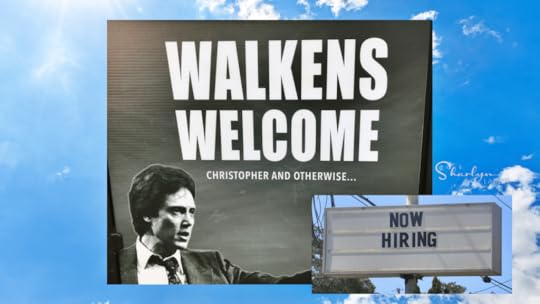
Estimated reading time: 4 minutes
Recruiters are having to get extra creative given the current challenges in today’s labor market. At the Society for Human Resource Management (SHRM) Talent Conference, I heard a recruiting executive talk about posting job openings in community church flyers. The team thought she was crazy to suggest it. The good news for the company is – it’s working.
One of my takeaways from the executive’s story is that organizations might need to get back to old school strategies to achieve recruiting success. It emphasizes the need to build a solid recruiting strategy. Because when you have a good foundation, then you can try new things and measure results.
If you’re looking for some information on how to build a recruiting strategy, here are a few resources to check out.
How to Develop a Workforce and Staffing Plan
Having a documented strategy that identifies the talent that the organization needs is a big part of helping the organization accomplish its goals. Because you can’t do it without people. However, there’s another component in finding the best talent. And that’s having a hiring process that works. And works well.
Recruiters Need Budgets to Source the Best Employees
Finding the best employees is and has always been a business priority. It starts with sourcing. But sourcing is more than simply conducting a whole bunch of Boolean searches. It’s about research, understanding business and hiring trends, as well as knowing the organization’s competition. When recruiters are equipped with the right data and information, they’re able to make sure candidates not only have a great experience but are offered employment opportunities that are fair, equitable, and competitive.
The 10 Skills Every Recruiter Should Have
The individuals responsible for finding and hiring the organization’s talent need skills. It’s not fair to simply say, “Hey! Go hire some high performers and rock stars. Oh, and do it quickly. And cheaply.” Organizations have an obligation to set their recruiting team up for success. Frankly, they should want to do it.
Successful Recruitment Means Being Responsive to Candidate Schedules
48% of candidates would be less likely to recommend or engage with an employer in the future, based on frustrating interview scheduling experience, rising to 64% with more senior roles. That means understanding what frustrates candidates and being able to mitigate those frustrations. It only makes sense – candidates who are frustrated with an organization won’t want to work for them.
8 Things Job Seekers Want from Recruiters
If organizations are trying to improve their candidate experience, conduct a little self-audit. How would you rate yourself in the areas of honesty, communication, feedback, and responsiveness? Are there actions you can put in place to improve? It’s possible that the company could positively impact their candidate experience without spending any money – through transparent and authentic communication, feedback, and responsiveness.
Recruitment Marketing: How to Conduct A/B Testing
If you haven’t considered A/B Testing, now is the perfect time to start testing it out. In short, A/B testing is when you create two messages that are the same except for one factor and then measure which message performs better. Create small experiments and evaluate results. Slowly your recruitment messaging will come into focus.
10 Ways to Recruit More Effectively Against the Competition
If you’re a good employer, job seekers will want to work for you. Organizations need to get the word out about their culture, jobs, and benefits. Now isn’t the time to be shy about the benefits of working at your organization. Because you can bet your competition is telling candidates the benefits of working for them.
There’s no doubt that organizations will need to make investments into their recruiting strategy and processes. It’s the way they will stand out from their competitive set. Developing recruiters, understanding trends, problem-solving, and using the right tools will help organizations find, select, and hire the best talent.
Image captured by Sharlyn Lauby while exploring the streets of Gainesville, FL
The post Bookmark This! Building a Recruiting Strategy Edition appeared first on hr bartender.






September 21, 2021
Is the Exit Interview Too Late
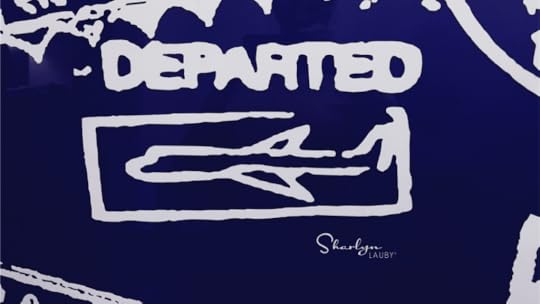
Estimated reading time: 3 minutes
I recently published an article about “Exit Interviews: Ask Employees About Their Experience”. Soon after, I received a very interesting comment from an HR Bartender reader.
Interesting post about exit interviews. But as I see it from the other side of the table, if I thought that my employer was interested in what I had to say then I would probably still be there. I see an exit interview as something that can only hurt me and cannot help me.
I completely get it. One of the reasons that an employee might be leaving is because they feel that their voice isn’t heard.
I also know plenty of organizations that ask the question, and the employee doesn’t respond. Either the employee feels that they don’t know what to say or simply don’t want to contribute to the conversation. Because – as the reader mentioned in their note – they feel it would do more harm than good.
Individuals and organizations must think about employee departures differently. It’s not about ending a relationship. It’s about changing it.
– Sharlyn Lauby
Unfortunately, this lack of communication hurts everyone. It hurts the employee because they don’t feel their feedback has value. The employee might have a terrific idea to save the company money or improve customer service. But because they don’t feel anyone will listen, it doesn’t get shared. In addition, the company suffers because not only did they not hear the great idea, but the employee will eventually get frustrated and leave.
Gautam Ghosh wrote a nice article titled “The Voluntary Employee Exit Process: The often-ignored part of building a relationship”. What I like about the article is the “building the relationship” part. Individuals and organizations must think about employee departures differently. It’s not about ending a relationship. It’s about changing it. Former employees can refer customers and candidates. Former employees might decide to come back as a freelancer or rehire.
Some people might say this is exactly why they follow this reader’s advice and keep their mouth shut. But not saying something doesn’t give anyone the chance to listen and possibly act. The good news is that there are many other opportunities for employees to provide feedback before the exit interview:
New hire surveys or check-ins. It’s very common for managers to check in with new hires to make sure that they feel welcome and are getting all the information they need.Employee engagement surveys. Many companies have annual employee surveys to anonymously ask employees about their work environment and experience.Stay interviews. Managers will often ask employees what they like about working for the company. If an employee doesn’t want to complain, be sure to tell the company what they’re doing well.Skip level interviews. This is when an employee meets with their manager’s boss. Sometimes it can be great to share ideas with someone other than your immediate supervisor.Training evaluations. Many evaluation forms ask if you have suggestions for future training topics. If you’re ideas or concerns are related to training, be sure to share your thoughts.Mentoring and coaching. If someone is struggling with how to present their concerns, talking with a coach or mentor could be helpful. In fact, I’ve had employees talk with HR about how to present ideas.While I don’t believe that the exit interview is too late in terms of sharing feedback, I do understand how others might feel that way. Just remember that there are plenty of other opportunities to share your thoughts and ideas. I’d hate to hear that an employee left the organization because they were frustrated that no one listened to them only to discover that they never used the feedback channels that were always available.
Image captured by Sharlyn Lauby after speaking at the Learning and Development League Annual Conference in Delhi, India
The post Is the Exit Interview Too Late appeared first on hr bartender.






September 19, 2021
Time to Refocus on In-Person Communication
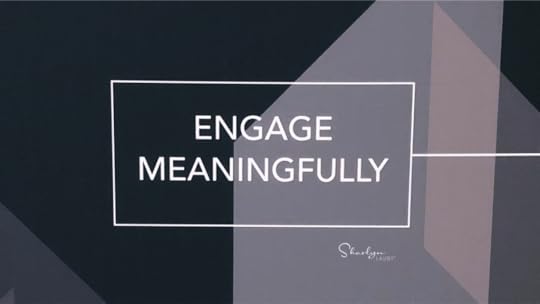
Estimated reading time: 3 minutes
There was an article recently on Fast Company titled “A surprising skill you may need to brush up on as you return to the office”. While I’m not sure the skill was surprising (communication), I do think it could be a surprise to some individuals that they might need to brush up on it. I mean, it’s not like we haven’t been communicating during the pandemic.
Communicating in-person might be different. And even the best communicators should spend some time thinking about their in-person communications.
Choosing the right medium. Think about all the communication mediums available to us – texting, email, video calls, and in-person. When we work remotely like during the pandemic, in-person communications aren’t necessarily an option. As we start to spend time in the office and travel more, the opportunity to use in-person communications increases. This means we need to remember those instances when it is best to communicate in-person because the expectation will be that we can.
Getting comfortable around people. If you’ve been working remotely and sheltering at home, it’s possible that you haven’t had much in-person contact with others. Just being in the same room with people could be a little stressful. It could make some sense to spend time thinking about how it will feel to be in an office, meeting, or conference with groups. Also think about how you want to destress after a full day interacting with people.
Small talk matters. At some point, we’re going to spend less time talking about COVID-19 and Delta variant statistics and more time about the television shows we’re watching and where we’re traveling to next. Those moments of small talk matter. It helps us connect with others. We might discover that a colleague hired during the pandemic is also a Ted Lasso fan.
Body language matters. When we’re on a video call, we don’t always see a participant’s body language. Sure, we could see their facial expressions but sometimes those are on delay (depending on your internet coverage) so it’s hard to get a real time reaction. During an in-person communication, we can see the reaction of others right away and need to be prepared to process it. Possibly even respond to it.
Have a personal debrief. Regular HR Bartender readers know I’m a big fan of debriefs. A simple two question debrief can help us improve our communications. After a big meeting or one-on-one, ask yourself 1) What went well during that interaction? 2) What could I do differently next time? Make a mental note of your answers and use it for the next time. This type of personal debrief might be something you want to do for a while just to improve your communication skills.
The Fast Company article that I mentioned at the beginning of this article reminded me that we need to think about how our communications are going to be impacted in the weeks and months to come. Organizations are making and changing plans when it comes to welcoming employees into the office. This means we need to be very flexible with our communications. Not only what we say, but how we say it.
Image capture by Sharlyn Lauby while exploring the streets of Salt Lake City, UT
The post Time to Refocus on In-Person Communication appeared first on hr bartender.






September 16, 2021
Bookmark This! Stay Interview Edition

Estimated reading time: 3 minutes
I recently had the chance to attend (virtually) the Society for Human Resource Management (SHRM) Talent Conference. It was an informative event, and I can’t wait to share more of the sessions with you.
A big takeaway I got from the event is that organizations are struggling big time with employee retention. I know this isn’t a surprise. We’ve been talking about the “turnover tsunami” for months now. But to offer some perspective, I was listening to a session and one participant commented that they had two employees resign since the session started. I don’t know the size of this organization but to have two employees resign in a window of thirty minutes could be cause for alarm.
One of the tools we must use to help us with employee retention is the stay interview. The idea is if we spend time understanding why employees stay with the company, we can use that information to improve employee retention. If you’re looking for some information about stay interviews, here are a few articles to get you started.
Employee Retention is Everyone’s Responsibility
Organizations are very focused on employee retention right now. As they should be. Turnover is expensive both in terms of hard costs as well as the drain on morale and productivity. There are some things that organizations can do to help everyone understand their role in employee retention.
Prevent Exit Interviews with Stay Interviews
We haven’t thought about them for a while but stay interviews might be making a comeback. They’re defined as structured interviews designed to learn the reasons that employees stay with a company or the conditions that might cause them to leave. As the talent wars continue, stay interviews can be a valuable way to engage and retain employees.
Flight Risk? Stay Interviews Can Alert Managers
Figuring out who the flight risks are in your organization doesn’t have to be hard. It does take regular, open communication. Stay interviews can help. Employees need to feel that they trust the organization enough to share what they’re thinking about when it comes to their job.
Employee Turnover: Solve It Using 4 Levels of Analytics
Organizations can use the principles of analytics to help them identify problems and brainstorm solutions using data as the driving factor. This is one of those moments when we can put the power of technology to excellent use.
Stay interviews don’t have to be a huge administrative burden. Managers can ask one stay interview question during a one-on-one or performance review. Or maybe HR can send out a one-question anonymous survey. Organizations might be surprised at the results.
Every organization must start taking proactive steps to improve employee retention. But what kept employees with the company two years ago might not be the reason they stay today. Find out the answer by asking employees for feedback.
Oh, and P.S. Once the organization understands why employees stay, this information could be helpful in recruitment. Let candidates know what employees love about working for your company!
Image capture by Sharlyn Lauby after speaking at the SHRM Annual Conference in Las Vegas, NV
The post Bookmark This! Stay Interview Edition appeared first on hr bartender.






Sharlyn J. Lauby's Blog
- Sharlyn J. Lauby's profile
- 10 followers



